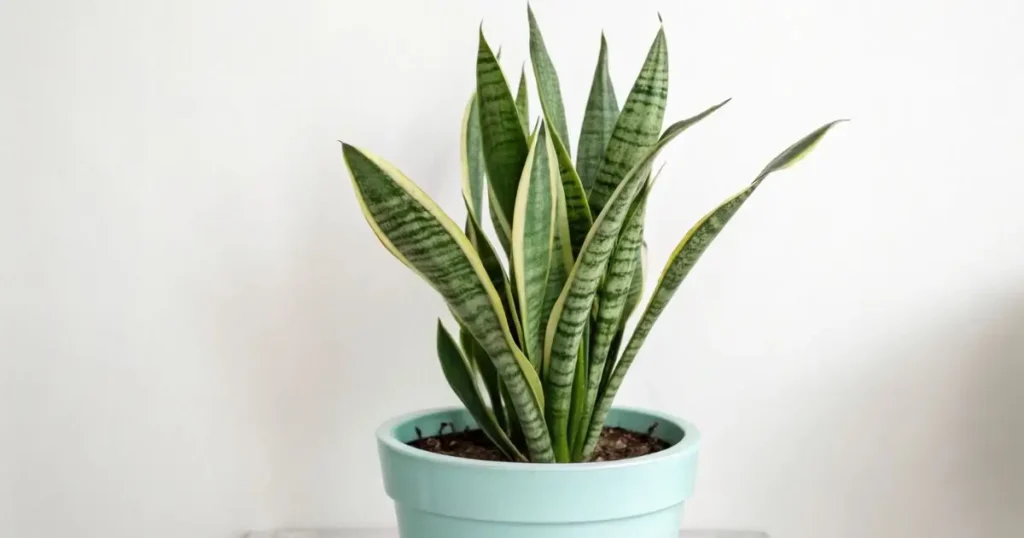
Curious about the snake plant, a.k.a. mother-in-law’s tongue? This houseplant stands out for being tough, visually striking, and super chill. I’ll walk you through its history, popular varieties, easy care tips, and ways to combine it with other greenery in your home. Expect simple troubleshooting tricks, plus insights into its potential health perks. Whether you’re new to indoor gardening or already have a green thumb, there’s something for everyone here!
Table of Contents
Introduction to the Snake Plant
Understanding the Snake Plant
I’ve been into houseplants for a while, and I’m always amazed at how often this bold favorite ends up in my top recommendations. The snake plant is special for a few reasons:
- It’s resilient enough to handle occasional neglect.
- Its tall, pointed leaves make a dramatic statement in any room.
- It’s a breeze to care for, so it works perfectly for beginners.
These leaves naturally store water, which helps the snake plant manage drought periods—especially if life gets busy and you forget to water. The plant’s capacity to forgive a few slip-ups is part of its charm. Many people also call it Dracaena trifasciata, reflecting its updated botanical name after being reclassified from the Sansevieria genus.
Brief History and Origin
Native to Africa and Asia, the snake plant earned worldwide admiration for its striking leaves and hardy nature. Able to flourish under bright light or in dim corners, it became a dependable choice for plant lovers everywhere. Its tall, upright silhouette and forgiving care routine continue to make it a timeless favorite.
Why the Snake Plant Is So Popular
Low Maintenance and Hardiness
Let’s face it, not everyone has time to fuss over their plants. A snake plant can handle sporadic watering and a range of light conditions. Because it stores water in its leaves, it doesn’t need constant attention. Here are a few reasons to love its toughness:
- Survives with minimal watering, especially in winter.
- Tolerates fluctuating indoor temperatures (around 60°F to 85°F).
- Grows slowly but steadily, so it won’t overrun your space.
That’s why it’s perfect if you lead a hectic lifestyle or simply prefer a low-key approach to plant care. Even if you’re new to indoor plant care, it’s less stressful when your plant can handle a little neglect. Think of it as the houseplant version of a laid-back friend who rolls with whatever comes along.
Aesthetics and Versatility
The snake plant instantly modernizes a room with its bold, sword-like leaves. Some folks prefer pairing it with sleek, minimalistic décor, while others love placing it in woven baskets for a more boho look.
- In a living room, it can be a statement piece beside a sofa.
- In an office, it livens up the workspace without adding clutter.
- In the bedroom, it offers a touch of greenery without demanding lots of maintenance.
Whether you’re partial to mid-century vibes, industrial lofts, or cozy cottage designs, this hardy houseplant blends right in. It also plays well with other plant friends thanks to its upright form, helping you cultivate an eclectic indoor jungle.
Types of Snake Plants (Species Overview)
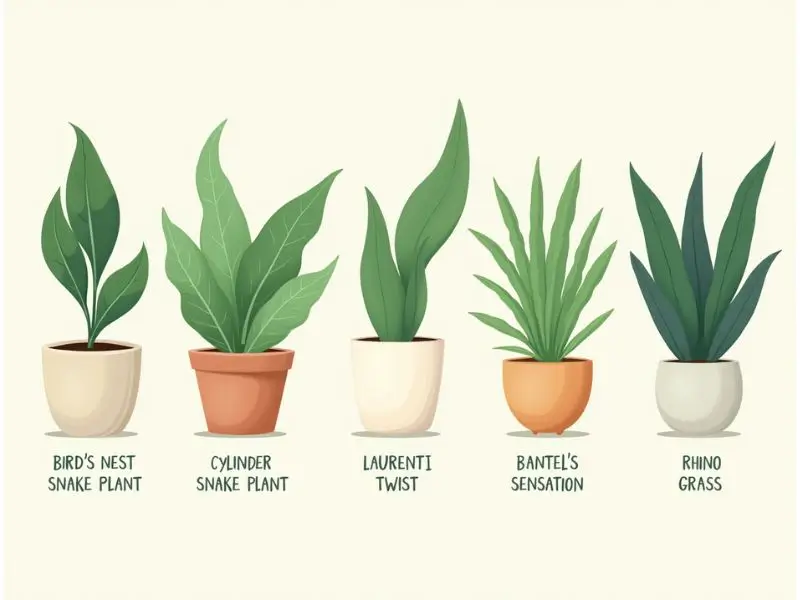
Common Varieties of Snake Plant
I used to assume all Dracaena trifasciata looked similar, but there are multiple funky varieties. Some popular types include:
- Sansevieria trifasciata Laurentii
- Has tall leaves with bright yellow edges and green banding.
- One of the classic, most recognizable varieties.
- Sansevieria hahnii (Bird’s Nest)
- Grows in a compact rosette, making it suitable for desks or shelves.
- Leaf edges often have wavy patterns.
- Sansevieria cylindrica (African Spear)
- Features cylindrical leaves that stand straight up.
- Adds a quirky vibe to modern interiors.
- Sansevieria Moonshine
- Displays silvery, pale-green leaves that appear almost ghostly.
- Perfect for contemporary or minimalistic setups.
Identifying Each Snake Plant Species
Identification isn’t tricky once you note leaf shape and color:
- Laurentii: Tall, flat leaves with a yellow stripe along the leaf margins.
- Hahnii: Short, fan-like leaves forming a nest shape.
- Cylindrica: Round leaves that resemble green spears.
- Moonshine: Light-grayish leaves that usually stay wide and upright.
Every type of snake plant offers its own distinct flair—some have bold stripes, while others may boast softer hues. Pick the one that resonates with your style, be it a taller, dramatic variety or a compact, subtle choice. If you love collecting, mix and match them to create a stunning indoor display full of varied shapes, colors, and sizes.
Snake Plant Care Basics
Light, Temperature, and Watering Requirements
When it comes to low-light houseplant care, the snake plant excels. It can handle bright, filtered sunlight, but also manages in dimmer spots. If you want faster growth, place it in a brighter spot while keeping these tips in mind:
- Aim for moderate to bright indirect light when possible.
- Keep room temps between 60°F and 85°F.
- Water sparingly; let the top inch or two of soil dry before watering again.
In colder seasons, growth slows down, so cut back on watering. During warm months, you can boost watering slightly if your home is particularly dry, but always avoid soggy soil. Maintaining that balance helps prevent root rot.
Soil, Potting, and Fertilization
Good drainage is everything. A potting mix labeled for succulents or cacti works wonders because it drains quickly. I often use a terracotta pot with a drainage hole, allowing any extra water to escape. This step greatly reduces the chance of waterlogged roots.
- Pick a cactus mix or a soilless blend with perlite.
- Repot only when the plant gets root-bound.
- Feed lightly with a balanced houseplant fertilizer in spring and summer.
Common Issues and How to Solve Them
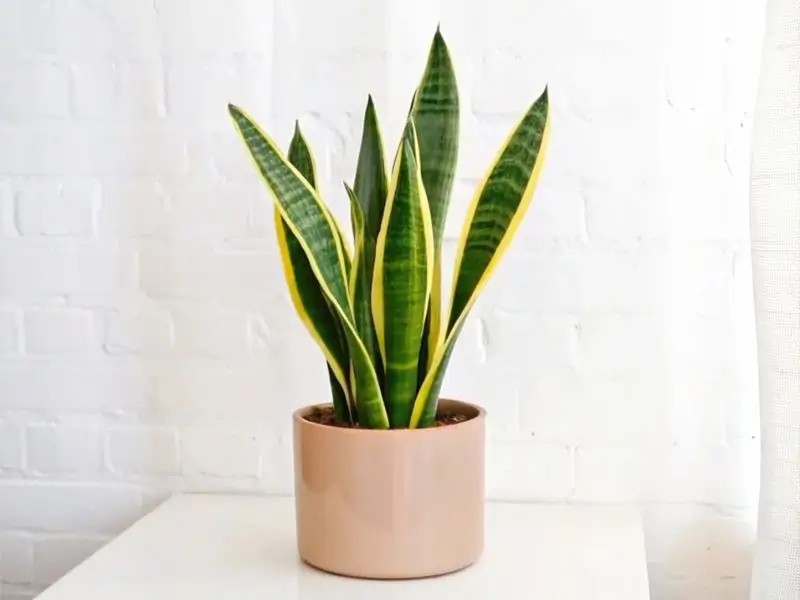
Overwatering, Root Rot, and Pests
One of the top mistakes with a snake plant is overwatering. Because its leaves store moisture, frequent watering can lead to droopy foliage and foul-smelling roots. Watch out for:
- Mushy or black roots indicating rot.
- An unpleasant odor around the pot.
- Yellowed or wilted leaves.
If you suspect root rot, remove the plant from its pot, trim damaged roots, and allow it to dry out. Then, repot in fresh, well-draining soil. Common pests—like mealybugs or spider mites—may also appear. Tackle them by wiping leaves with a mild, soapy cloth or using neem oil sprays.
For broader guidance on pest management and plant disease, check out the USDA’s horticulture resources for safe and practical tips, as they provide up-to-date information on identifying and controlling common pests.
Leaf Discoloration and Slow Growth
Yellow or brown leaf tips might signal water stress or too much direct sun. Direct scorching rays can burn the leaves, so keep them in filtered light. When leaves appear pale and limp, relocating the plant to a spot with increased indirect light may provide a helpful boost.
Growth, on the other hand, can be slow—particularly in cooler months. If you notice a lack of new leaves, try these quick fixes:
- Provide stable, moderate temperatures.
- Use a gentle houseplant fertilizer during active growth seasons.
- Rotate the pot occasionally for even light exposure.
Remember, mother-in-law’s tongue isn’t known for speedy growth, so patience definitely pays off here.
Indoor Décor and Design Ideas with Snake Plant
Placement Tips for Optimal Visual Impact
The snake plant can fill awkward corners or flank a sofa, adding instant height and structure. Consider these suggestions:
- Position it near an entryway to welcome guests with a burst of greenery.
- Pair it with a tall, elegant planter to draw attention upward.
- Use it as a divider in open-concept spaces for subtle separation.
If you’re short on space, a smaller variety like Sansevieria hahnii can nestle onto a bookshelf or countertop. On the flip side, a large Laurentii can anchor a reading nook, giving you a refreshing sense of nature while you kick back with a good book.
Combining Snake Plants with Other Houseplants
I love mixing plant shapes and textures. The upright, stiff leaves of the snake plant contrast nicely with the trailing vines of a pothos or the sprawling leaves of a philodendron. See if these ideas spark your creativity:
- Group plants at different heights for an indoor “plant family.”
- Mix leaf colors—dark greens, variegated stripes, silvery tones.
- Add accessories like decorative stones or small figurines around the pot.
Hanging planters, ferns on side tables, and cacti on windowsills can all co-exist with the Dracaena trifasciata. By blending plant personalities, you’ll craft a lively indoor garden that’s both beautiful and easy to maintain.
Propagation Techniques for Snake Plant
Leaf Cutting Method
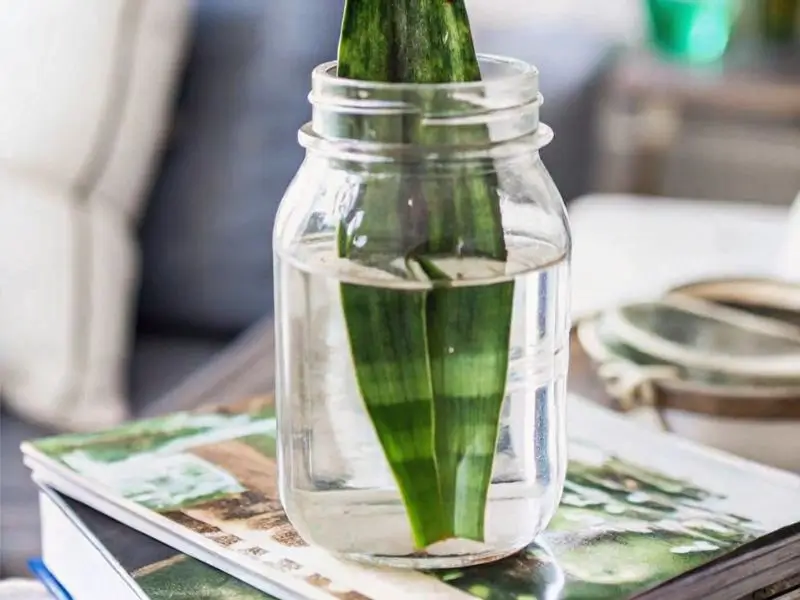
Propagating a snake plant from a single leaf is a rewarding, almost magical process. Here’s how:
- Select a healthy leaf and cut near the base.
- Let the cut end callus over for a few days to prevent rotting.
- Place it in water or a well-draining potting mix.
- Monitor for new root growth, which may take several weeks.
If propagating in water, remember to refresh the water weekly. Keep the cutting someplace warm and bright—indirect sunlight is best. Once roots form, you can transplant into potting mix.
Division Method

Sometimes, mature snake plants produce pups, little clones popping up around the main plant. If you spot these offsets, you can separate them by gently removing the entire plant from its pot. Find the natural division line, then slice or pull apart the connecting roots.
- Pot the offsets in individual containers so they can grow independently.
- Use a similar cactus mix or succulent potting soil for consistent drainage.
- Water sparingly until the offsets become established.
Division is often quicker than leaf cuttings because you already have a tiny, rooted plant. It’s a great way to multiply your collection or share little green gifts with friends.
Snake Plant Benefits
If you want an easy-care houseplant that still makes a visual impact, the snake plant is a fantastic pick. Here’s why:
- Forgiving to New Growers: Survives just fine if you miss a watering.
- Distinct Leaf Shape: Tall, upright blades add an eye-catching flourish to any corner.
- Flexible Lighting: Flourishes in bright spots or shadier nooks.
- Vertical Footprint: Perfect for tight spaces since it grows upward instead of out.
- Drought-Tolerant: Stores extra water in its thick leaves, so it’s hard to kill.
- Fresher Atmosphere: Many owners feel it helps keep indoor air a bit cleaner.
Snake Plant FAQs
How Often Should I Water My Snake Plant?
Water frequency depends on your climate and the season. During summer, you can water around every 2–3 weeks, as long as the top few inches of soil are dry. In chillier months or in rooms with less light, stretch that out to once a month. Overwatering is a more common issue than underwatering, so it’s wise to err on the side of caution.
- If leaves appear wrinkled, that indicates thirst—time for a drink.
- If leaves are mushy, that signals potential rot—hold off and let the soil dry.
Can Snake Plants Survive in Low Light?
Yes, they can. These plants don’t need bright direct sunlight and will adapt to lower-lit corners just fine. Don’t expect rapid growth, but the plant will maintain its shape and color. If you notice leaves losing contrast or leaning toward the light, gradually shift it closer to a window for a little boost.
Is the Snake Plant Toxic to Pets?
The mother-in-law’s tongue does have saponins, which can upset a pet’s stomach if they decide to munch on a leaf. If you share your home with a curious cat or dog, keep the plant on a shelf or in a spot they can’t easily reach. Minor symptoms may include drooling, vomiting, or diarrhea. Always consult a vet if you’re concerned.
How Fast Do Snake Plants Grow?
They grow at a moderate pace, often producing a few new leaves each year. Warmer temperatures and brighter light might encourage slight spurts of growth. If you really want to see progress:
- Provide consistent watering without overdoing it.
- Use a mild fertilizer in spring and summer.
- Give the plant enough breathing room for root expansion.
Don’t stress if it’s not sporting new leaves every month. Sometimes, a healthy snake plant can quietly focus on root strength rather than height.
Conclusion and Final Thoughts on the Snake Plant
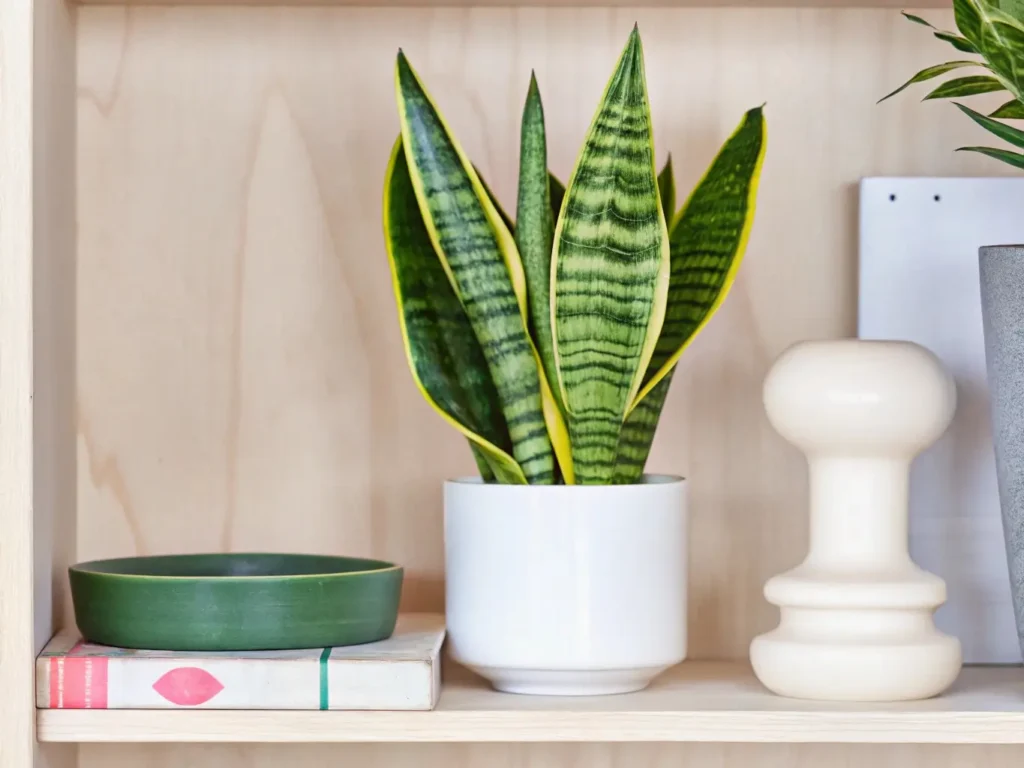
Recap of Key Points
We’ve covered the Dracaena trifasciata from every angle—its global background, multiple varieties (like Laurentii and Cylindrica), basic care routines, potential pitfalls, plus easy propagation. We also touched on how it can freshen up décor, add a dash of style to living or work areas, and possibly support better indoor environments.Main Takeaways:
- Use well-draining soil and water sparingly.
- Place it where it can access some indirect light.
- Enjoy its slow-but-steady growth pace and sculptural leaves.
Encouragement for New or Experienced Plant Owners
If you’re just starting out, the snake plant is a forgiving first choice. Even if you occasionally forget watering, it’ll likely bounce back. If you’re an avid plant parent, expanding your collection with various Dracaena trifasciata cultivars can keep things interesting. Rotate them around your house until you find the perfect decorative fit.
Make no mistake, snake plants are among the easiest, most stylish companions you can welcome into your home. They’re effortless, attractive, and quietly beneficial—an all-around win for anyone craving a touch of nature indoors.

6 thoughts on “Snake Plant : Easy Indoor Care Guide”
Comments are closed.